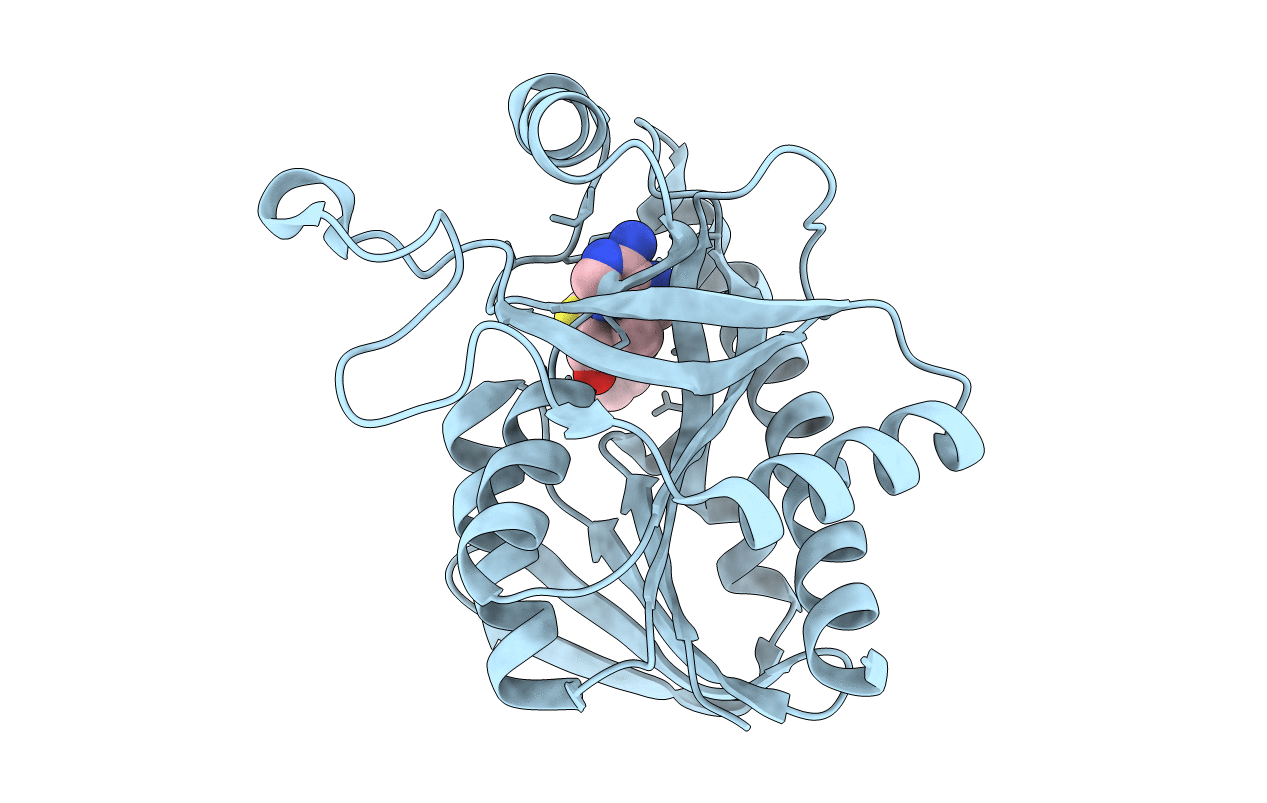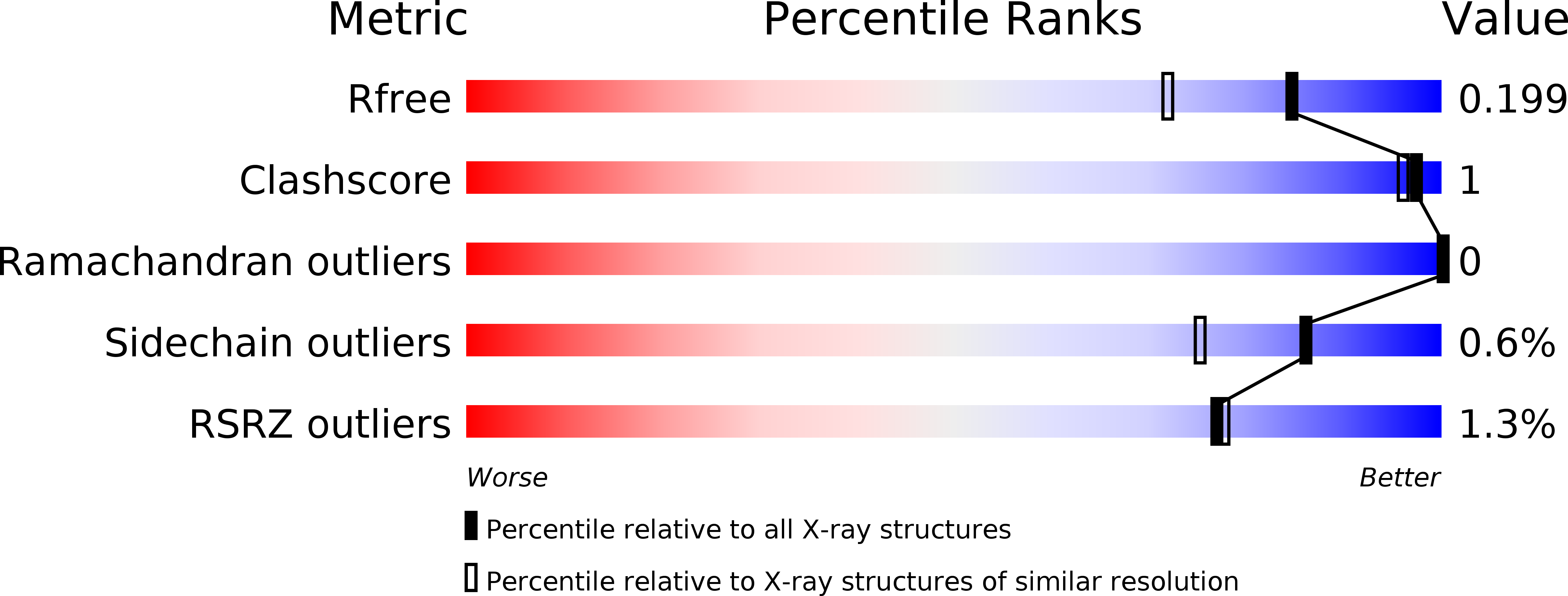
Deposition Date
2014-10-02
Release Date
2015-08-19
Last Version Date
2023-09-27
Entry Detail
PDB ID:
4WKC
Keywords:
Title:
Crystal structure of Escherichia coli 5'-methylthioadenosine/S-adenosyl homocysteine nucleosidase (MTAN) complexed with butylthio-DADMe-Immucillin-A
Biological Source:
Source Organism:
Escherichia coli O139:H28 (Taxon ID: 331111)
Host Organism:
Method Details:
Experimental Method:
Resolution:
1.64 Å
R-Value Free:
0.18
R-Value Work:
0.15
R-Value Observed:
0.16
Space Group:
C 2 2 21


